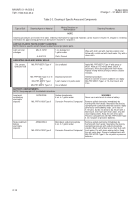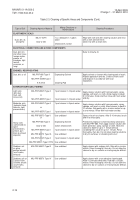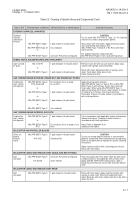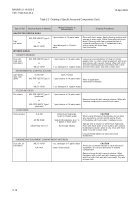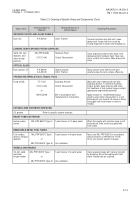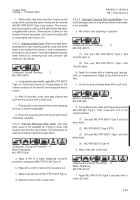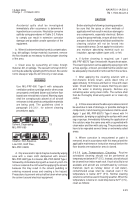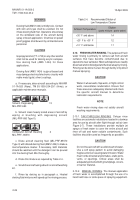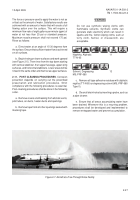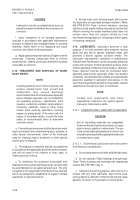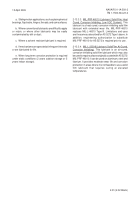TM-1-1500-344-23-2 - Page 48 of 240
2-24
NAVAIR 01-1A-509-2
TM 1-1500-344-23-2
15 April 2009
WARNING
Do not use synthetic wiping cloths with
flammable solvents. Synthetic cloths can
generate static electricity which can result in
sparks and fire. Cotton wiping cloths, such at
terry cloth, flannel, or cheesecloth, are
acceptable.
2-9.3.6. Solvent Cleaning. The use of MIL-PRF-85570
for stubborn or exceptionally oily areas on exhaust
tracks, landing gears, wheel wells, and engine nacelles
will normally be sufficient. When this material has not
completely cleaned these areas, MIL-PRF-680 Type II
or MIL-PRF-32295 Type I can be used in small quantities.
The quantity used shall be limited to the minimum
necessary to accomplish the required cleaning. In using
MIL-PRF-680 for cleaning, remember that it will burn
intensely once ignited. Solvent available at the aircraft
or equipment shall not exceed three gallons under the
use or control of each person authorized to accomplish
the cleaning involved. The authorized person shall be
thoroughly familiar with applicable safety precaution
and disposal information. The time (dwell) the solvent is
allowed to remain on painted surfaces shall be held to
a minimum (10-15 minutes maximum) to prevent
softening of the paint. Control drain off of dirty solvent
resulting from the cleaning operation to prevent
unauthorized entry into the sewer. Minor spillage (less
than one gallon) is not considered significant; however,
solvent spillage should be cleaned up according to local
regulations. In no instance shall the solvent be allowed
to drain into or enter a public sewer or otherwise be
allowed to contaminate streams or lakes.
2-9.3.6.1. The following guidelines shall be followed in
using MIL-PRF-680 Type II:
a. Use only in areas approved by the local safety
office.
b. Ensure that the area within 50 feet of the solvent
cleaning operation is clear and remains clear of all
potential ignition sources.
c. Use only explosion-proof electrical devices and
power equipment. Power units used in servicing shall
be placed upwind and beyond the 50 feet clearance.
Ensure that the aircraft or equipment is grounded.
d. No smoking shall be allowed in the solvent cleaning
area.
e. Mixing of solvents with other chemicals, cleaning
compounds, or water is strictly prohibited except as
specified by this manual.
f. Suitable fire extinguishing equipment shall be
available to the solvent cleaning area.
g. Wear ANSI Z87.1 Type II goggles, protective wet
weather clothing, solvent resistant gloves, boots, and
head covering. Use a respirator fitted with organic vapor
cartridges when working in an enclosed area. Ensure
that good ventilation is maintained. Consult the local
safety office for PPE requirements
2-9.3.6.2. Clean the area as follows:
Solvent, Degreasing
13
MIL-PRF-680
Cleaner, Non-Aqueous,
15
Low VOC, HAP Free,
MIL-PRF-32295
a. Apply MIL-PRF-680 Type II (or MIL-PRF-32295
Type I) using pad, cloth, or brush. Clean up spills as
they occur.
b. Ensure that no solvent/cleaner is trapped or has
entered the equipment interior. Remove by wiping with
clean cotton wiping cloths or by blowing dry with clean,
low pressure air (10-15 psi).
c. Collect waste solvent/cleaner and wiping rags
and dispose in accordance with local regulations.
d. After cleaning with MIL-PRF-680, rewash the
area using procedures in paragraph 2-9.3.2. to remove
residue left by the solvent.
2-9.3.7. Interior Cleaning. Dirt, dust, small loose objects,
and paper can be removed from an area by use of an
industrial or domestic vacuum cleaner. A soft bristle
brush on the inlet of the vacuum cleaner will aid in
removal of soils.
a. Floor boards and areas underneath the floor
boards (bilge) shall be inspected at depot-level
maintenance and as necessary for cleaning and/or
corrosion treatment. Particular attention shall be given
to urinal areas and other areas that may trap water.
Change 1 - 31 March 2010
Back to Top

